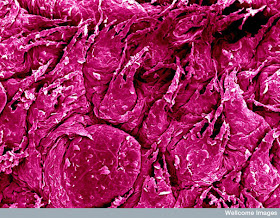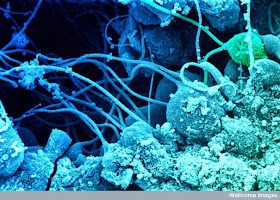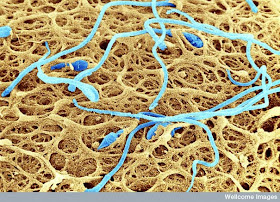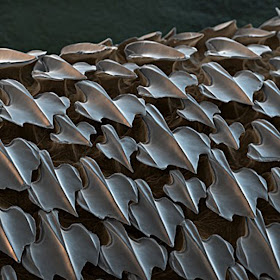Tapi b4 tu, Me-X nak explain ckit, mcm ner orang ambik gambar macam dlm Part I and Part II ni...FYI, dieorang guna "electron microscope" ...Bawah ni, asal usul benda bernama electron bin microscope, baca sendiri yeee...
"If you looked down the most powerful light microscope in the world, you’d be able to distinguish individual objects that are around 200 nanometres apart – roughly 1/500 the width of a human hair. But objects closer together than that would just merge into one. This is because the wavelength of visible light is longer than 200 nanometres.
But electron microscopes use beams of electrons, instead of light. The wavelength of these electron beams is much shorter, allowing scientists to see structures as small as 1 nanometre (1 millionth of a millimetre).
So, faham x? ...haha..kalau malas nak baca, skroll terus ke bawah yo! Jom tengok pictures ni..
Surface of tongue
Sperm developing in the testis
Sperm on the surface of a human egg
[“Numerous sperm trying to to fertilise a human egg. They are trying to find their way through the zona pellucida, the membrane that surrounds and protects the egg.”]
Shark skin
*terbaek la shark skin ni...mcm megatron pun ada Me-X tengok..Terbaik la ciptaan Nya, kan kan...
Credits to:
http://www.boredpanda.com/looking-at-the-world-through-a-microscope-part-iI/
http://scienceblog.cancerresearchuk.org





No comments:
Post a Comment